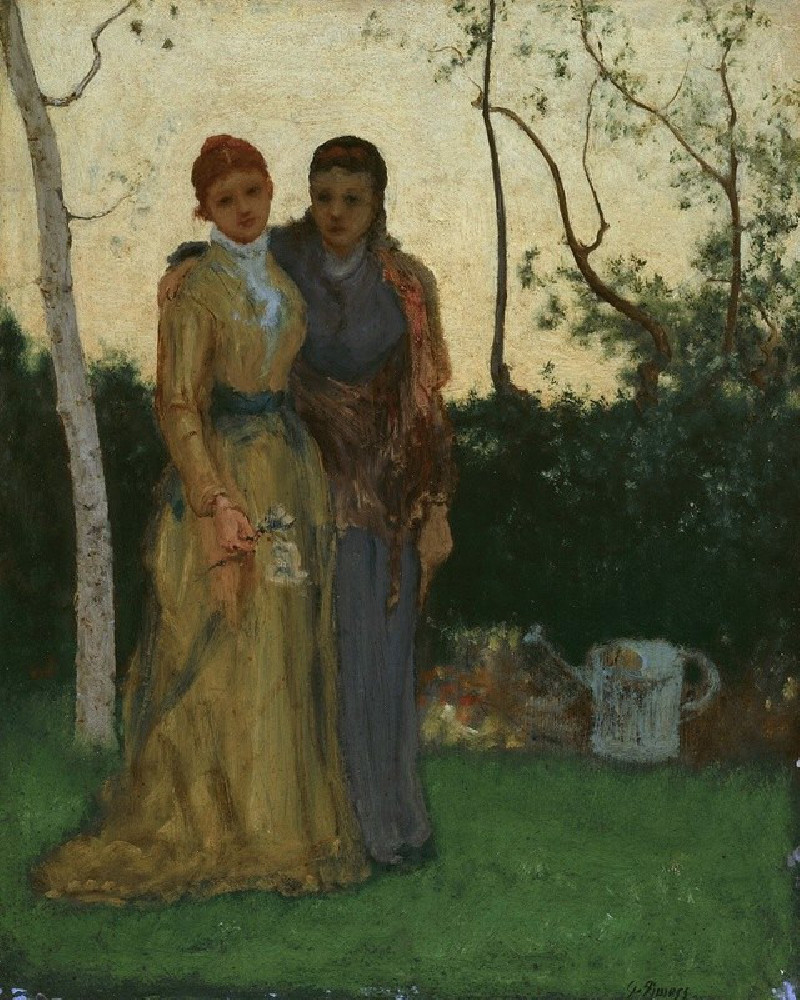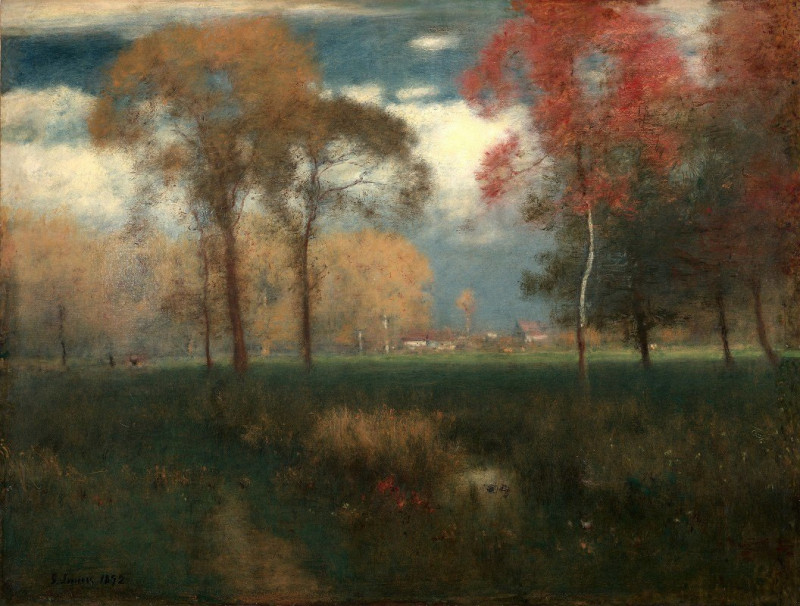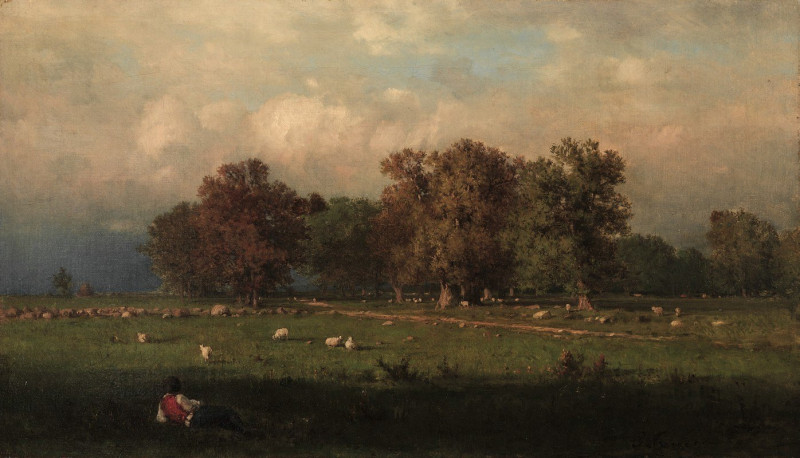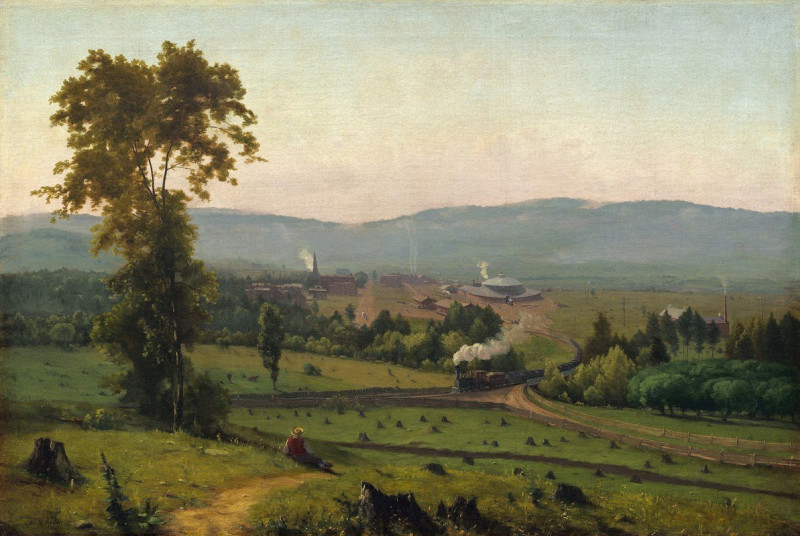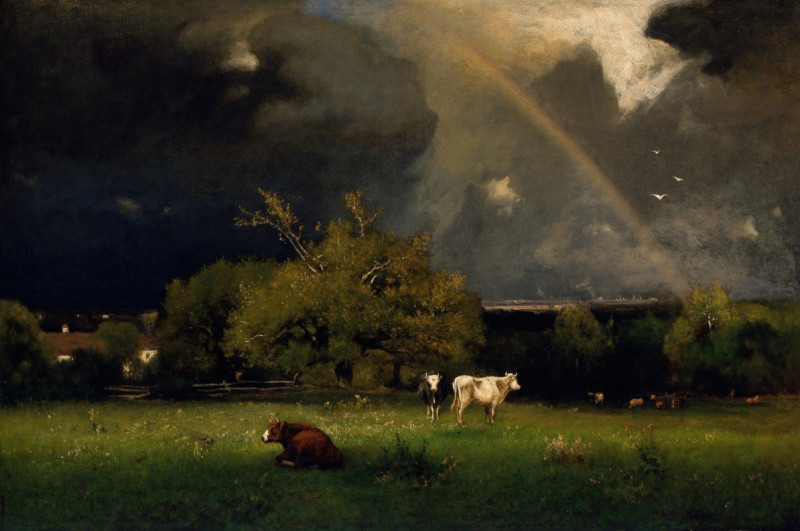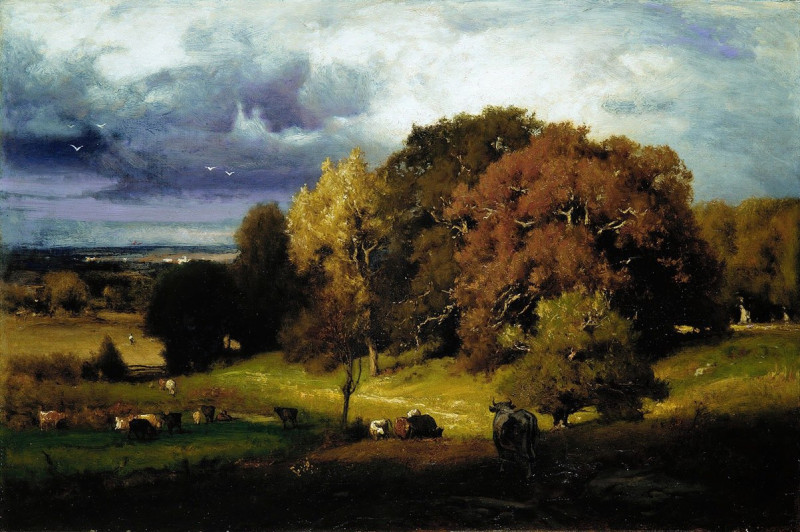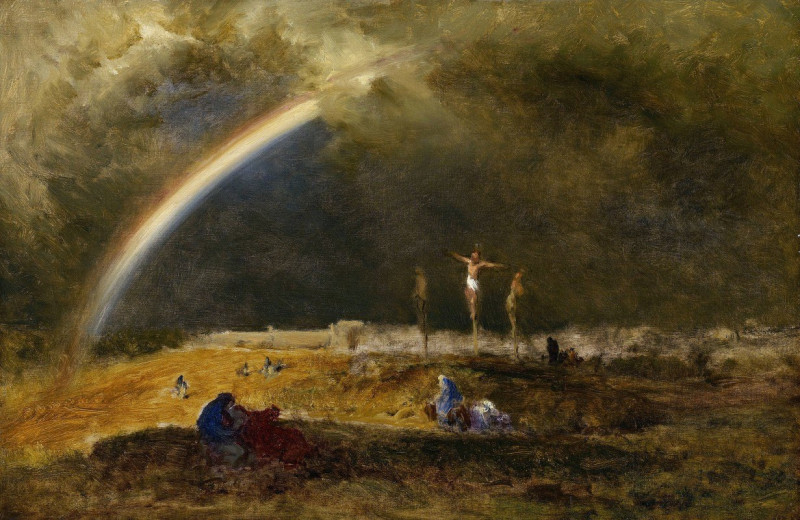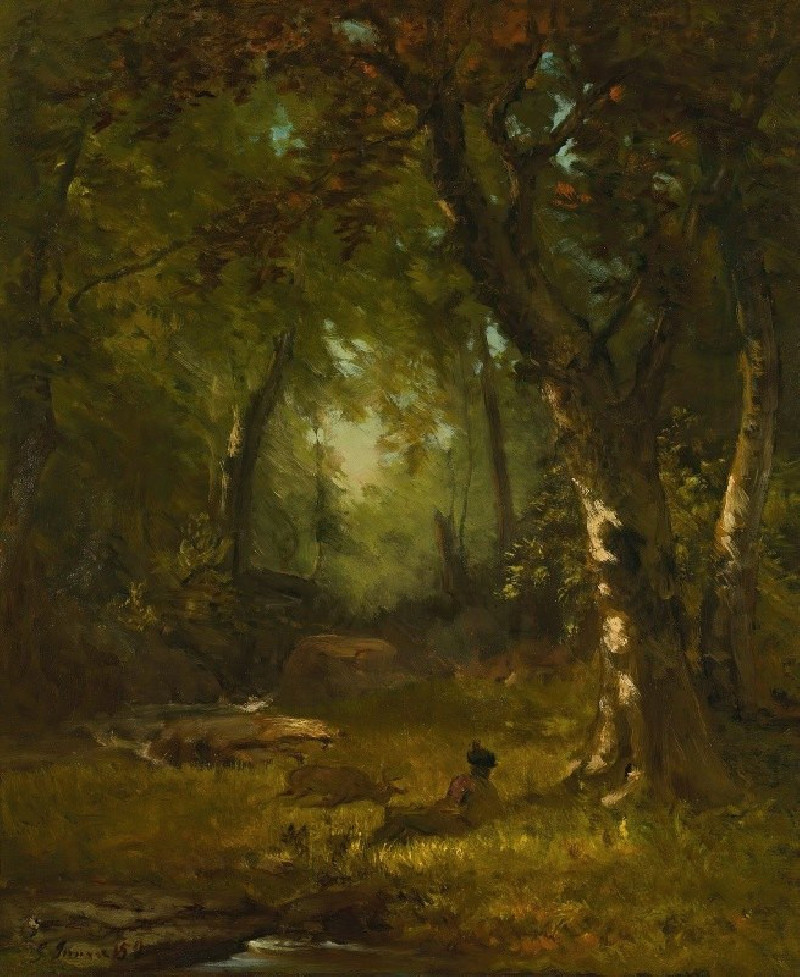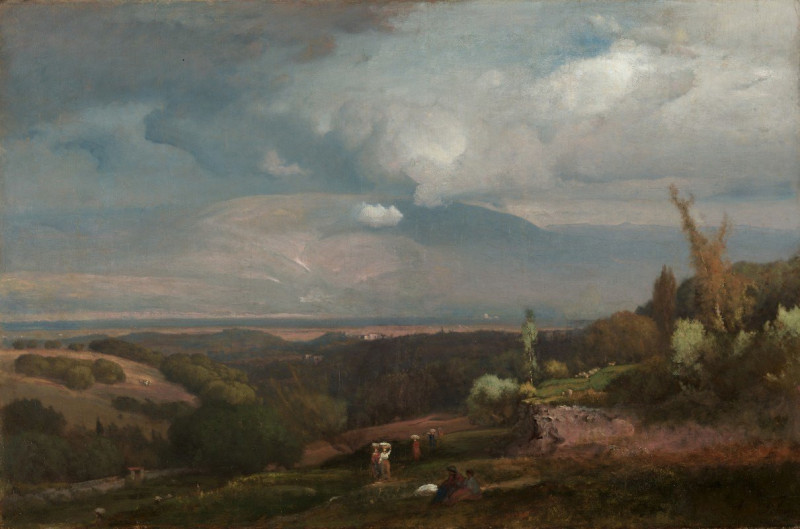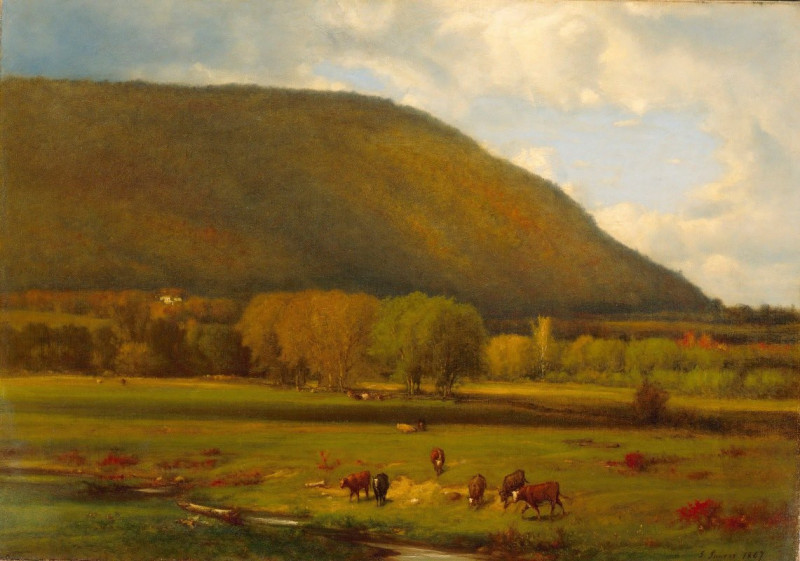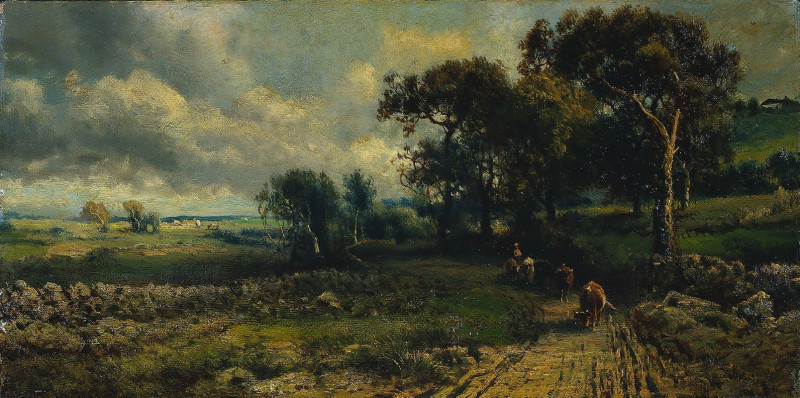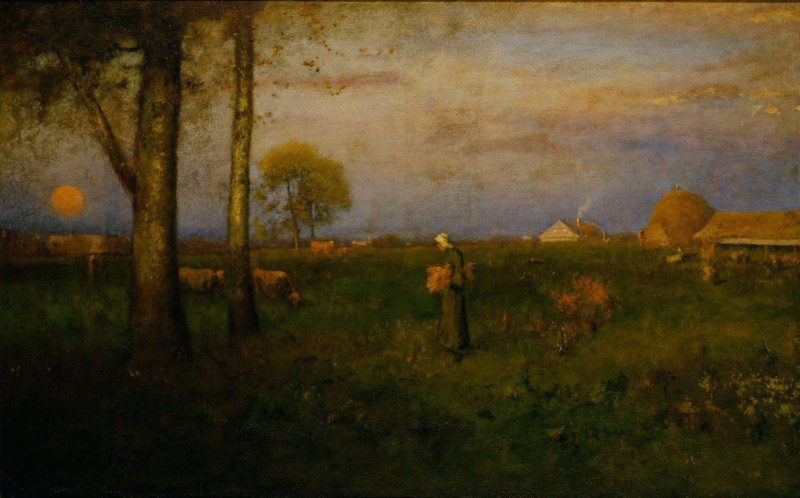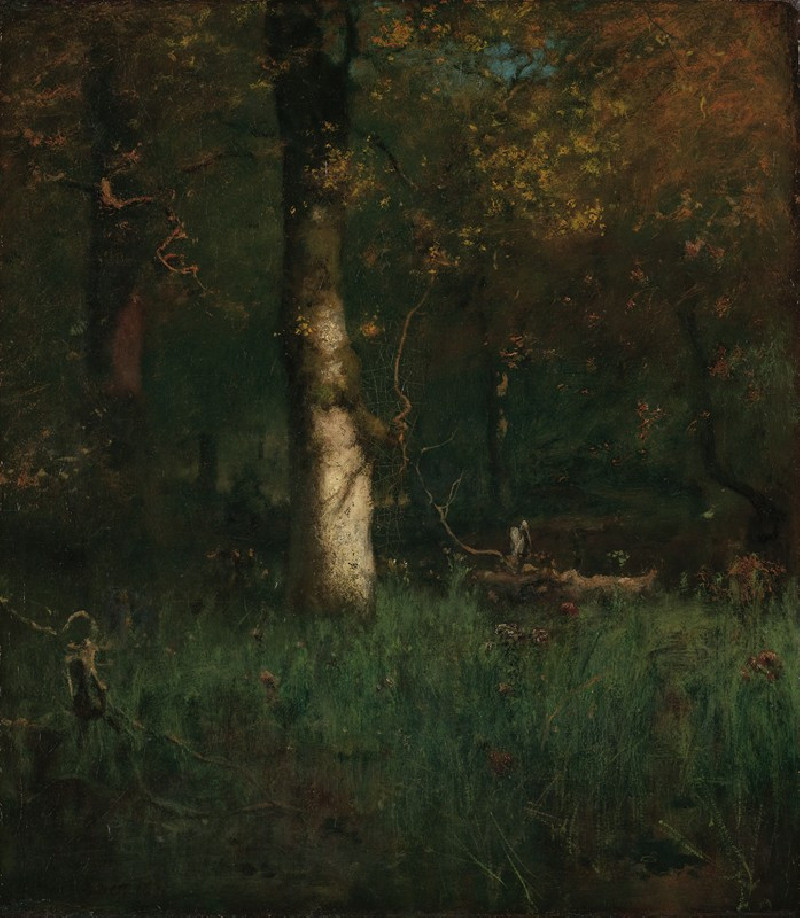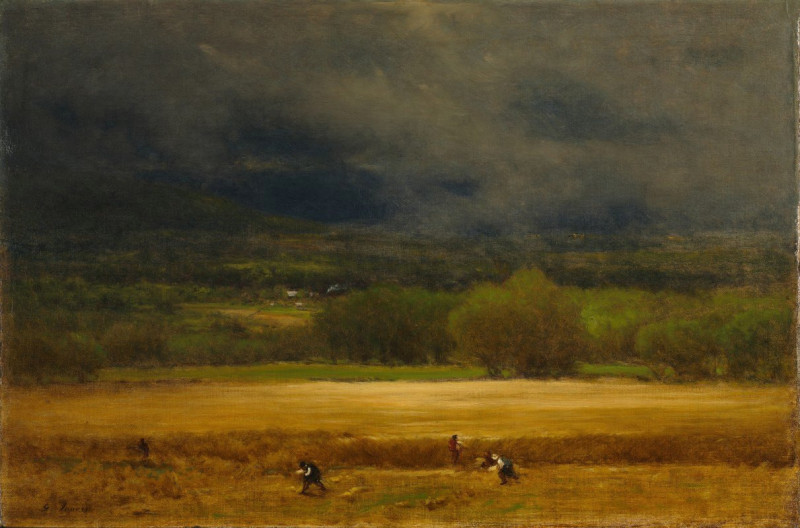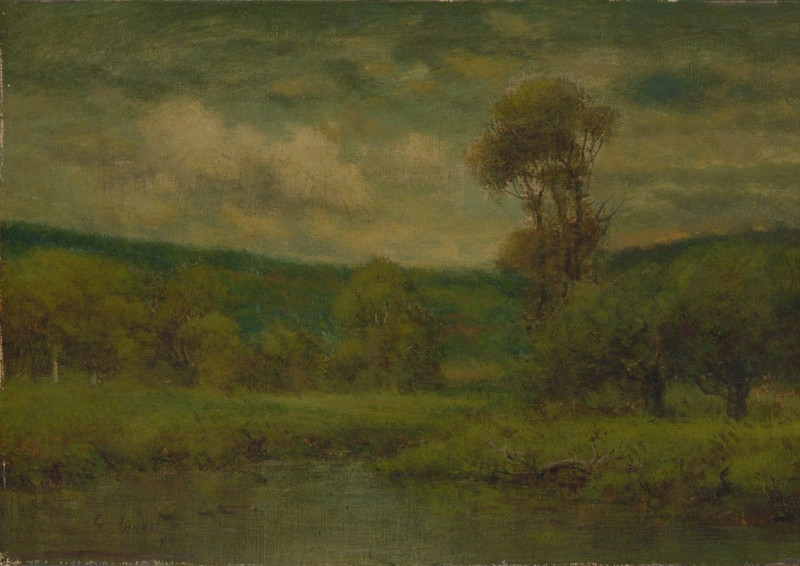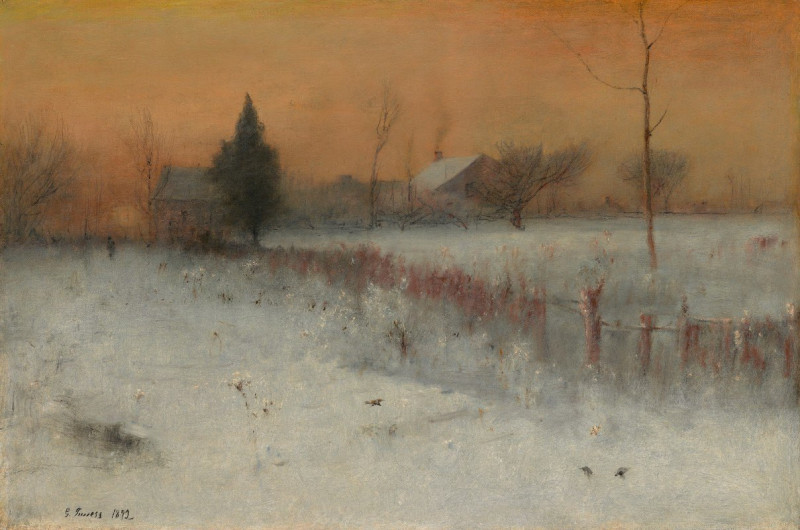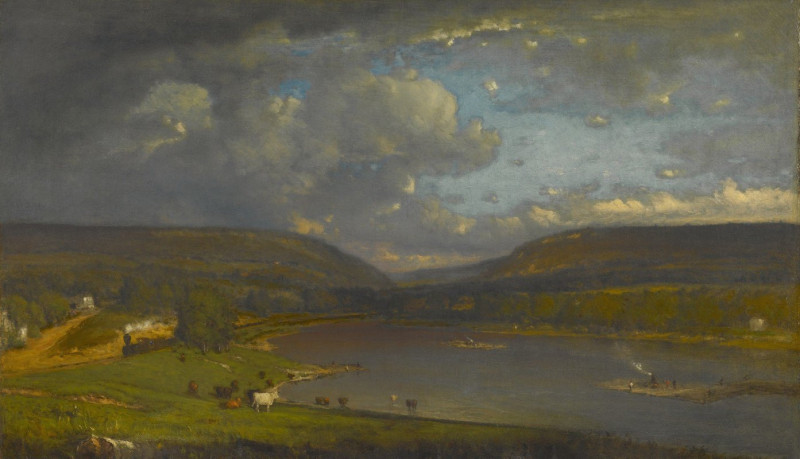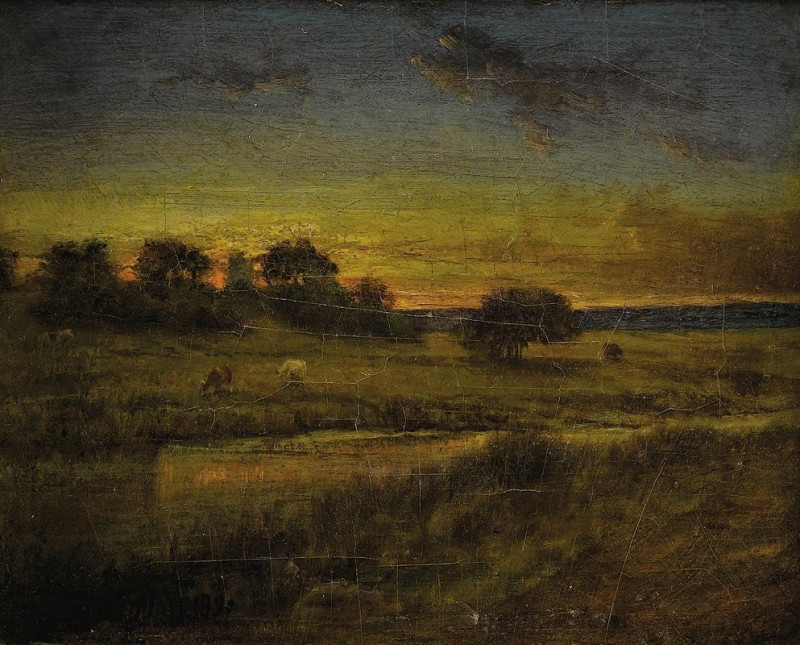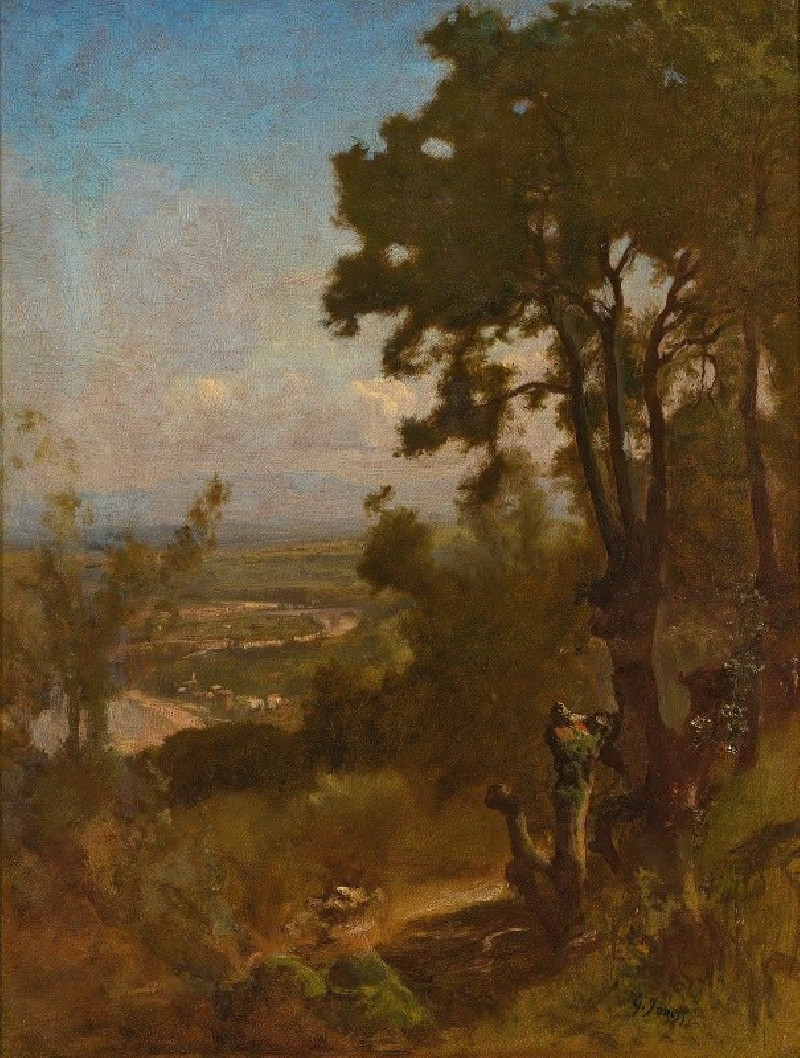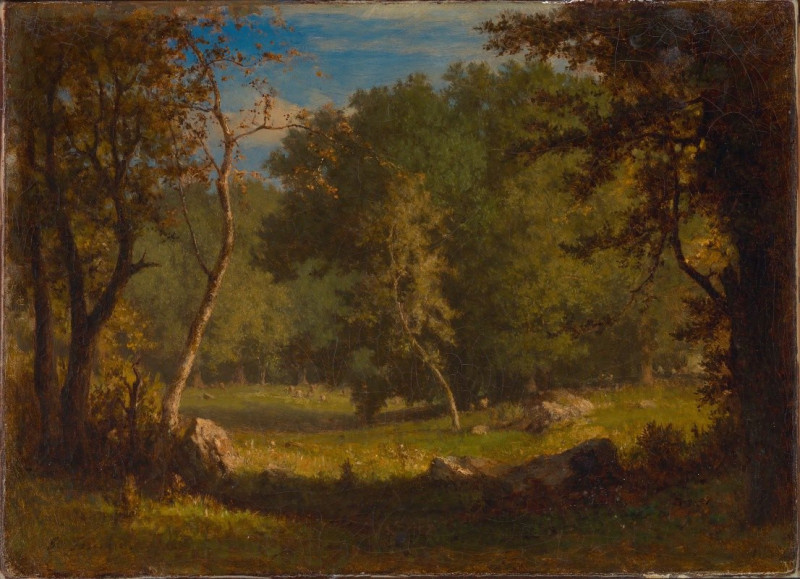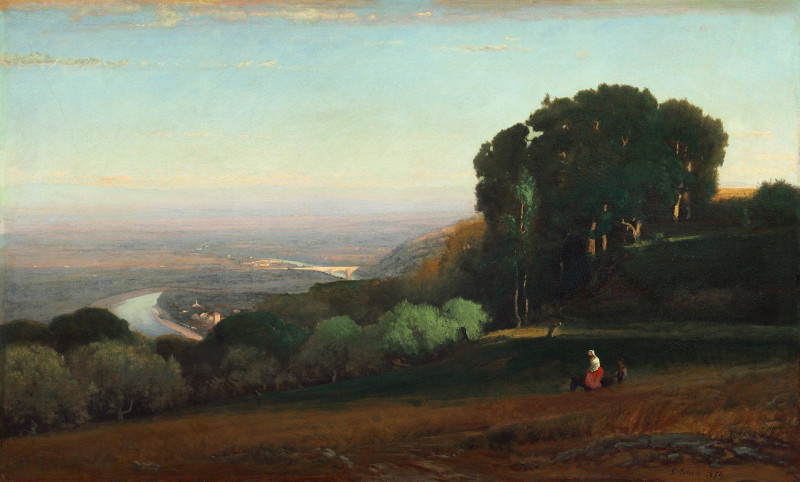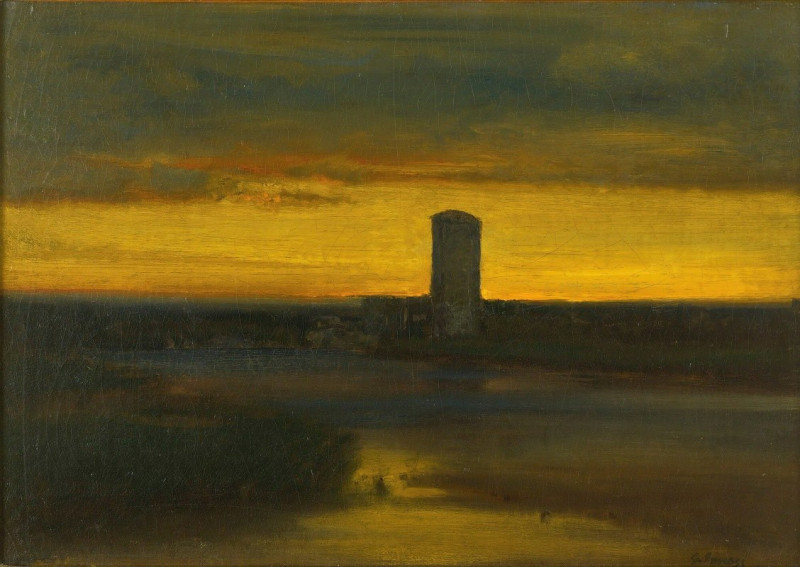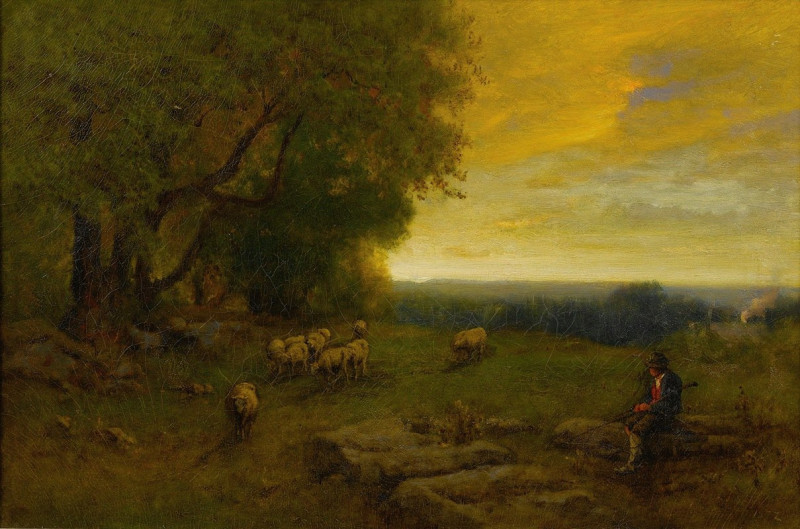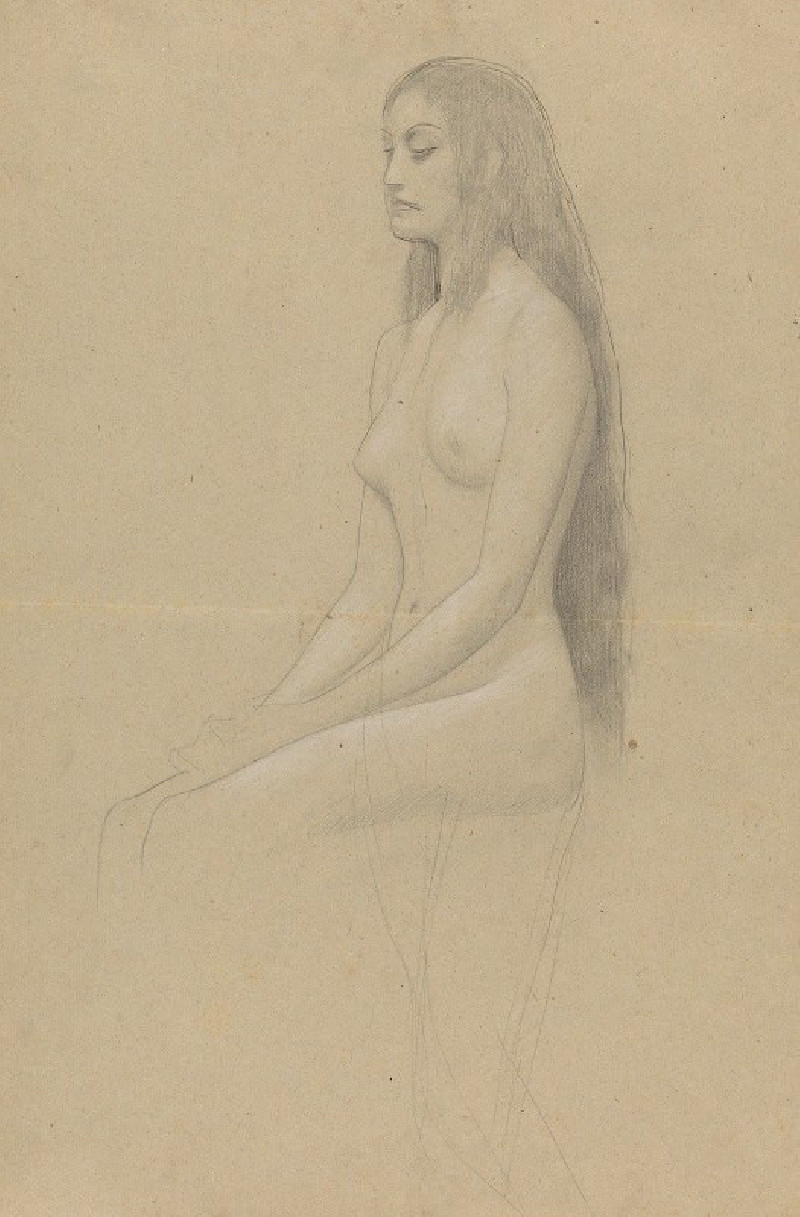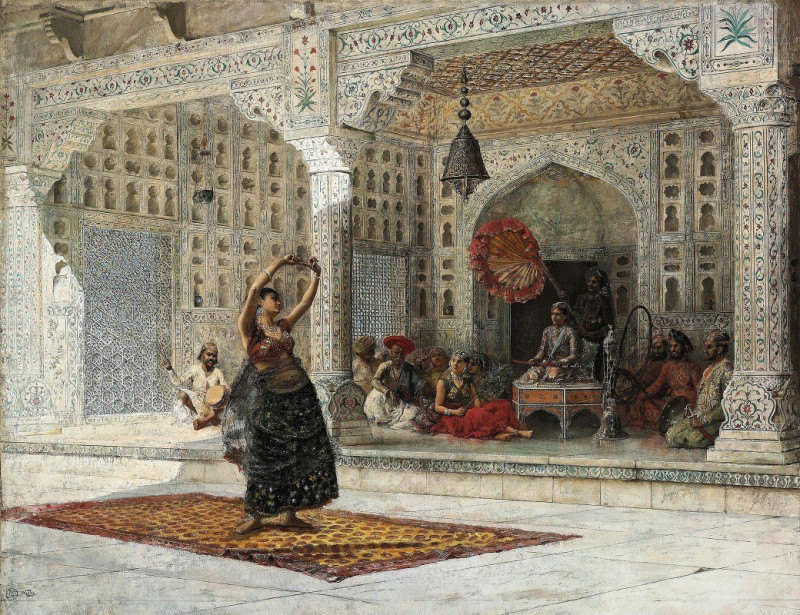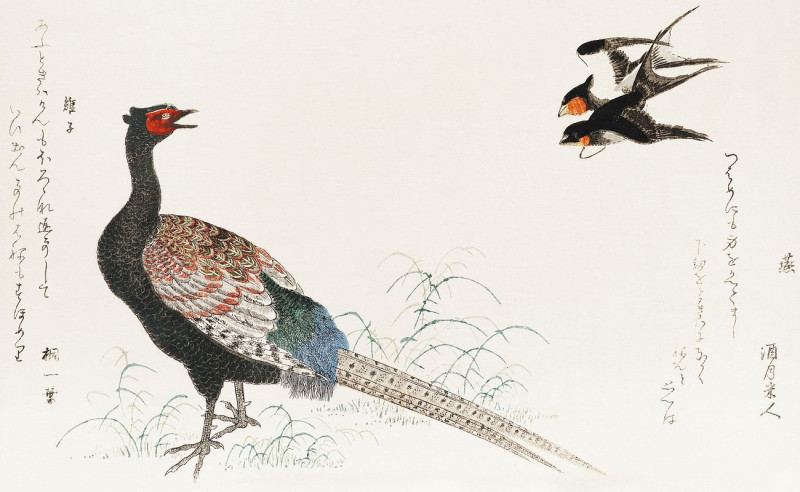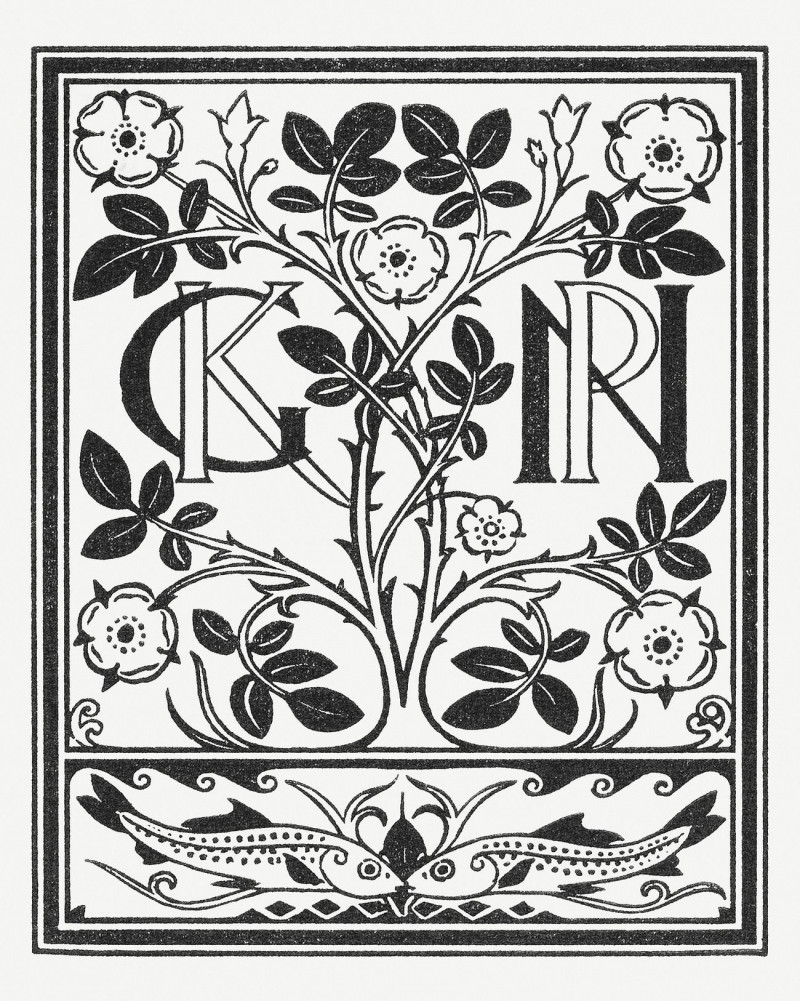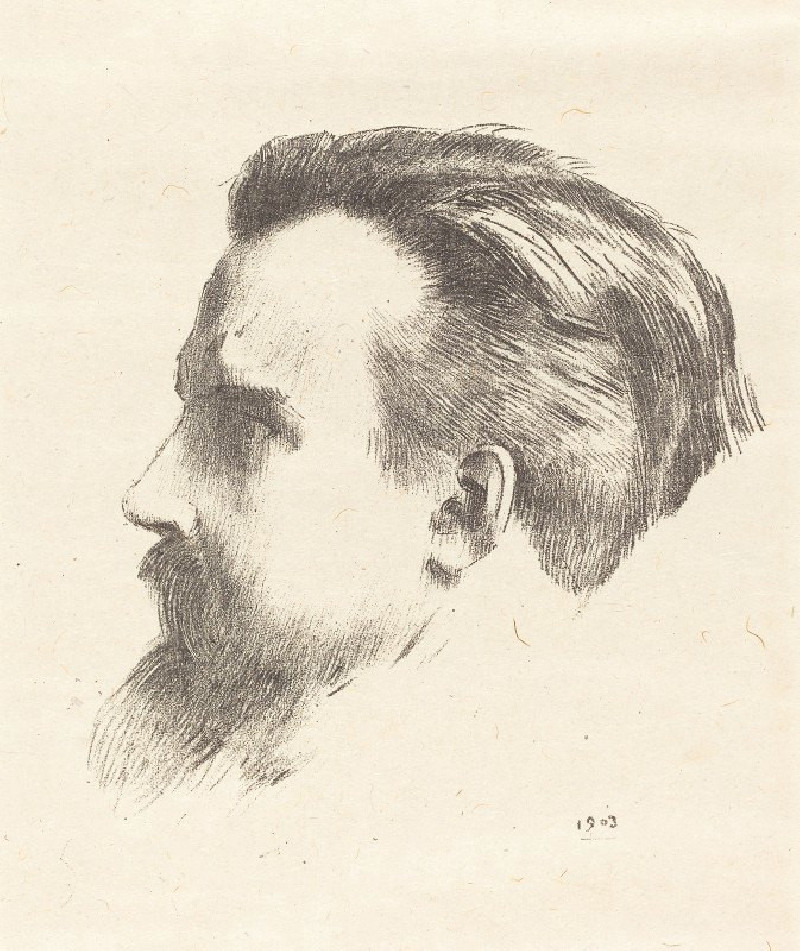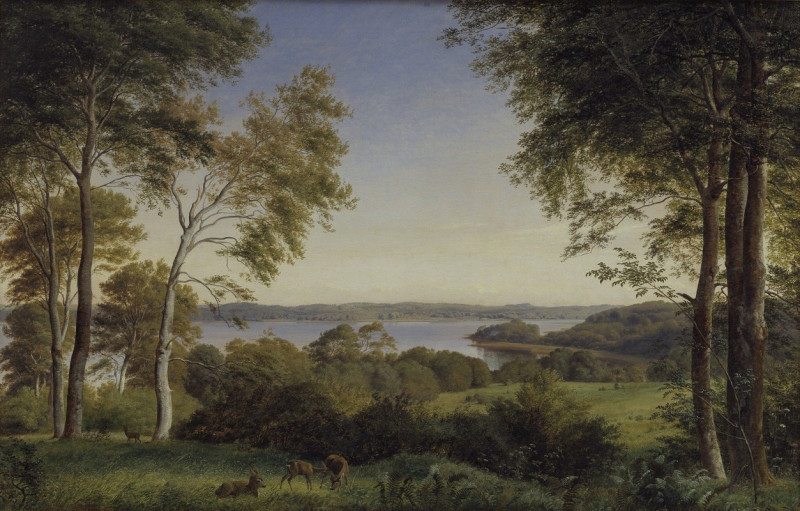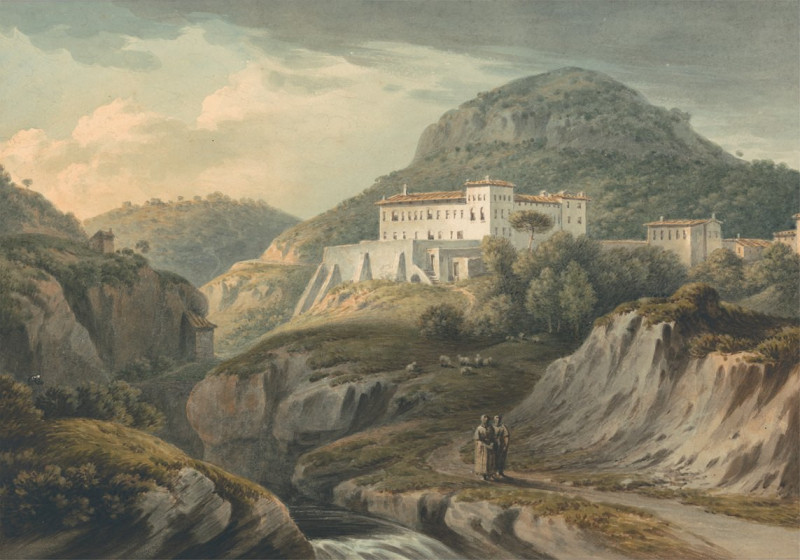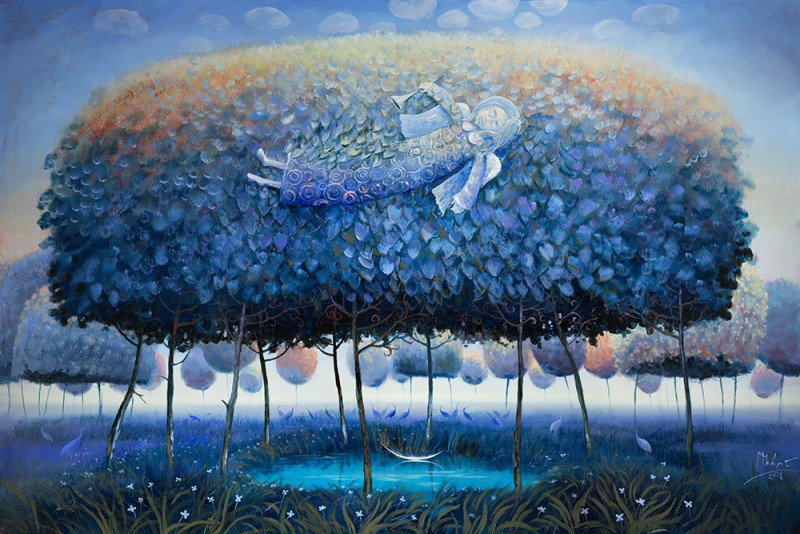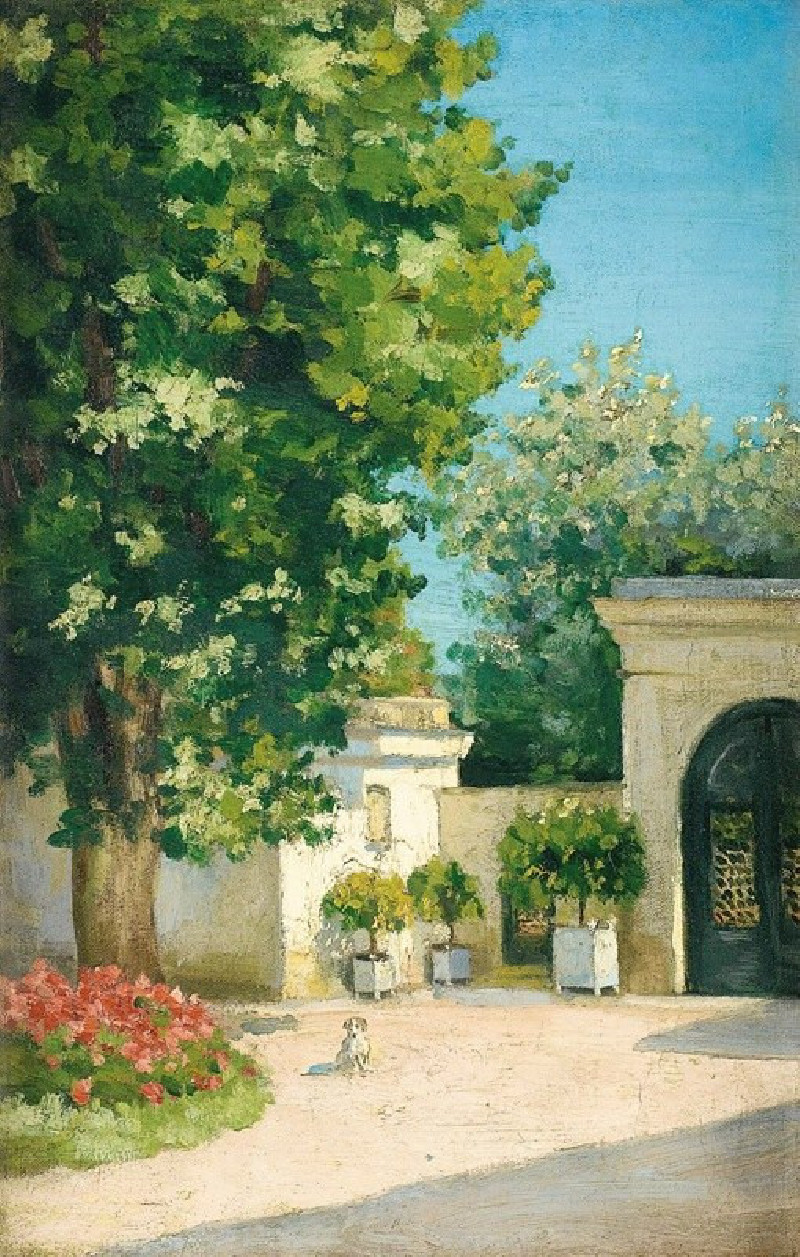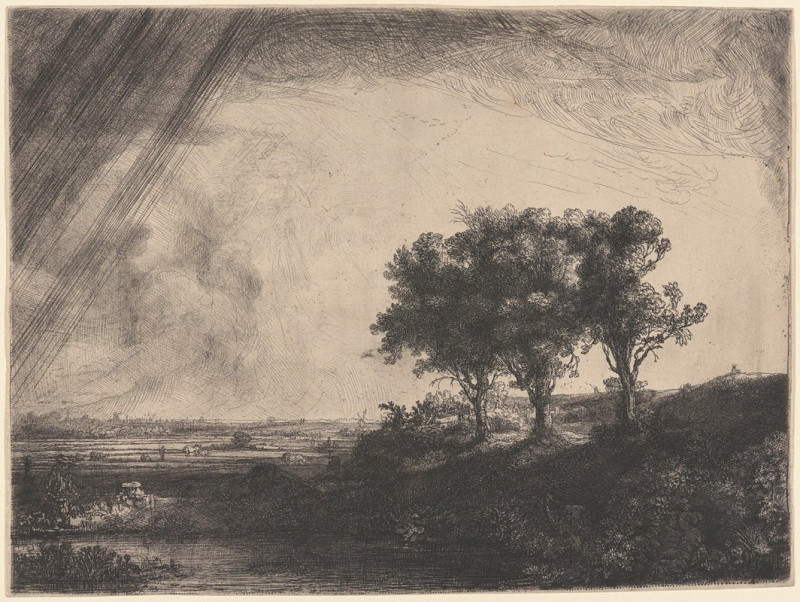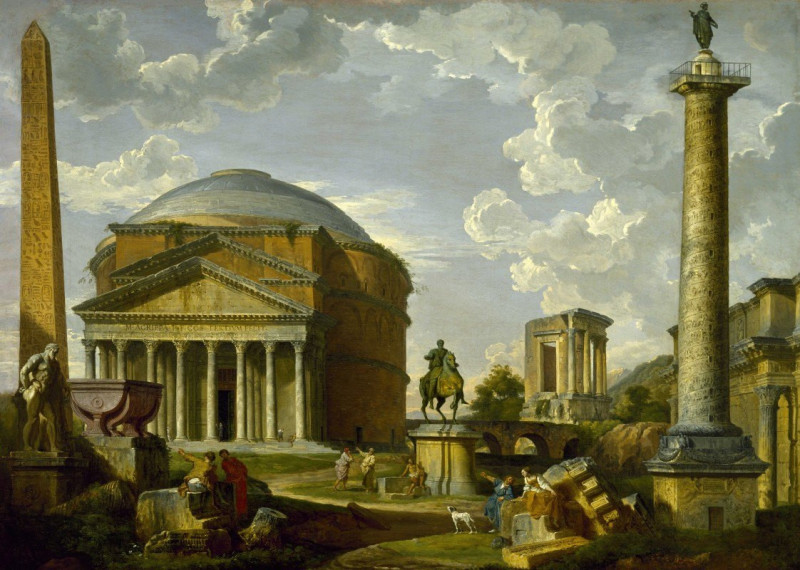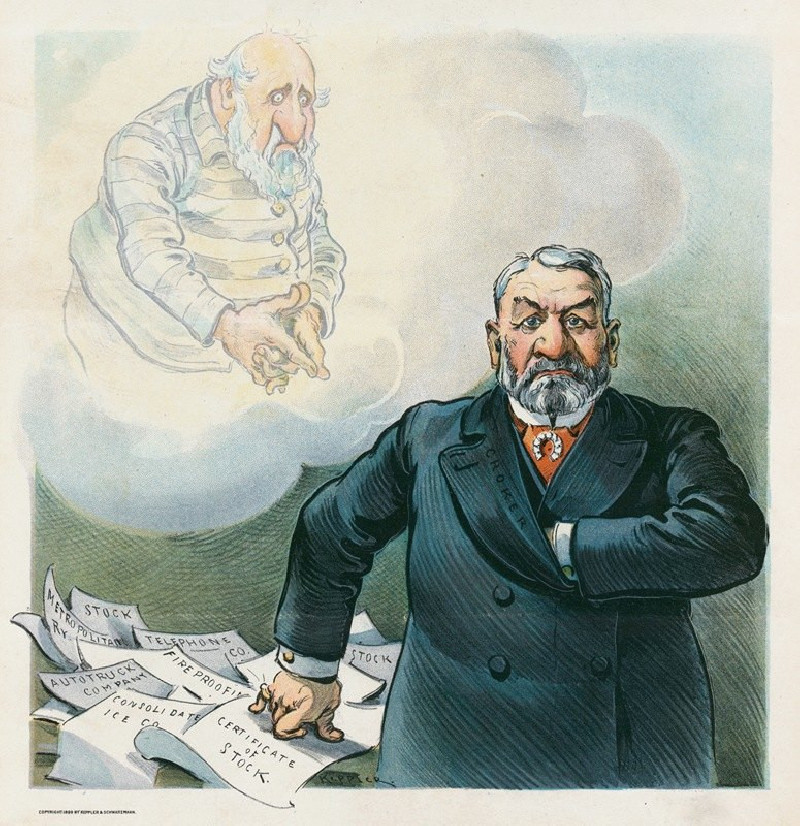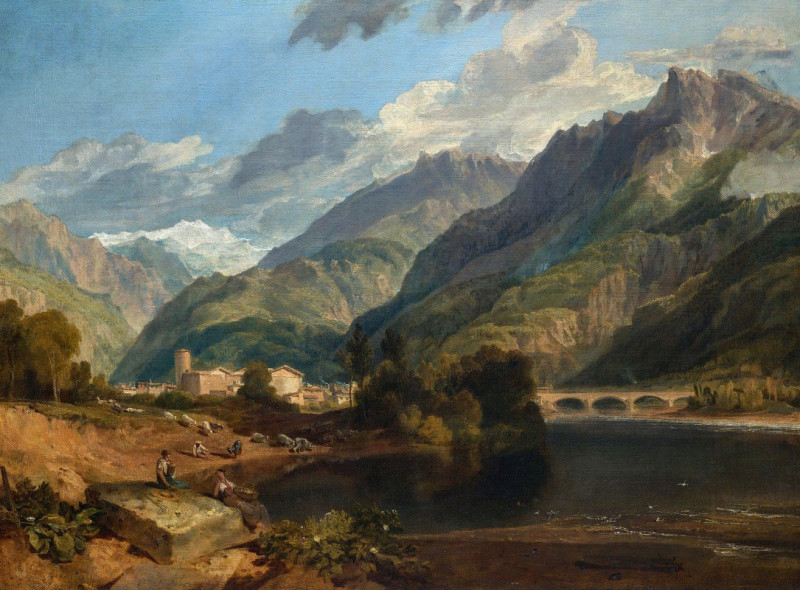The Sisters (1882)
Technique: Giclée quality print
Recommended by our customers
More about this artwork
George Inness, renowned for his profound interpretations of the American landscape, captures a tender moment between two sisters in his 1882 painting titled "The Sisters." This painting reveals a different layer of Inness's artistic versatility, focusing on human figures amidst a natural backdrop, rather than his typical sweeping vistas.The artwork portrays two women standing close together in an intimate, wooded setting. The elder sister, adorned in a soft yellow dress with delicate blue details, holds a small object in her hand, drawing gentle attention to their shared space. The younger sister, in a muted blue outfit with warm rust accents, gazes outwards, lending a contemplative air to their interaction. Their expressions and poised stance suggest a deep bond and mutual reliance.Surrounding them, the landscape brims with verdant greenery and subtle hints of a fading day, possibly dusk, as evidenced by the soft, mellow lighting that permeates the scene. A hint of domesticity or leisure is implied by the presence of a basket and a metal pitcher resting in the grass, possibly suggesting a picnic scenario or a pause in their daily routines to connect with nature and each other.Inness's brushwork in "The Sisters" offers a soothing blend of realism and impressionistic touches, with colors and textures merging to evoke a sense of harmony and peace. This painting invites viewers to reflect on the quiet moments of connection that define relationships, amid the ever-present beauty of the natural world.
Delivery
Returns
George Inness (May 1, 1825 – August 3, 1894) was a prominent American landscape painter.
Now recognized as one of the most influential American artists of the nineteenth century, Inness was influenced by the Hudson River School at the start of his career. He also studied the Old Masters, and artists of the Barbizon school during later trips to Europe. There he was introduced to the theology of Emanuel Swedenborg, which was significant for him; he expressed that spiritualism in the works of his maturity (1879–1894).

